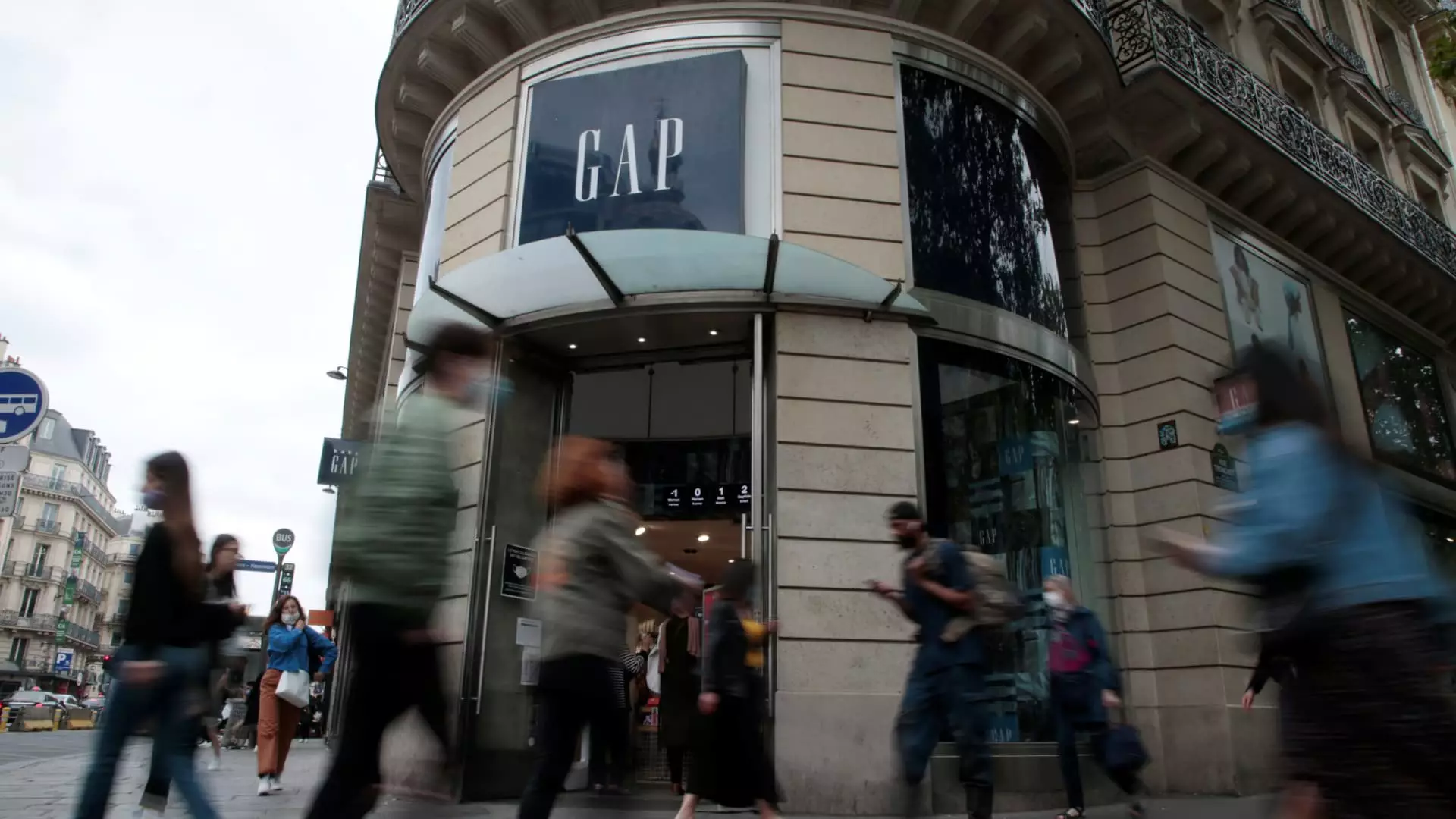In the wake of new tariffs that threaten to drastically impact its financial health, Gap Inc. finds itself at a precarious juncture. With a staggering assessment estimating an additional burden of $100 million to $150 million due to a new 30% tariff on imports from China and a 10% levy on goods from various other countries, the company’s fiscal future seems uncertain. These developments, made public during their recent fiscal first-quarter earnings announcement, led to a serious market reaction—shares plummeted by over 15% in after-hours trading. Such a fall is not merely a statistic; it’s a stark representation of how external political decisions can specifically target corporate stability and, by extension, the livelihoods tied to these businesses.
The Gap Between Forecast and Reality
Despite a minor revenue increase of about 2%—from $3.39 billion last year to $3.46 billion this year—Gap’s guidance is riddled with contradictions and specters of uncertainty. Although its reported net income exceeded Wall Street expectations, the anticipated decrease in gross margins paints a worrying picture. Gap’s forecast for a gross margin of 41.8% falls short of analyst expectations and results not solely from tariff effects, but rather from lost advantages offered by last year’s credit card promotions. While the company plays down panic, the implications of these new financial hurdles cannot be understated.
It is disconcerting that only a few months back, the CEO, Richard Dickson, had minimized the expected repercussions of tariffs, stating that less than 10% of their products came from China. Fast forward, and it seems the rapid and unpredictable shifts within the global trade framework have left Gap scrambling. By the end of the year, they aim to reduce their sourcing from China to less than 3%, which might be strategically prudent, yet it raises questions about the company’s adaptability and foresight.
Mitigation: A Desperate Pivot
Gap’s response to the impending disaster is one rooted in diversification and cost mitigation, with intentions to enhance their reliance on U.S. cotton. While efforts like these may seem rational, they shine a light on a greater issue: Should large corporations be abruptly reactive to tariffs rather than proactively assessing supply chain longevity and resilience before crises emerge? Dickson’s confidence in the strength of their brands suggests an optimism that contrasts with the grim financial landscape.
This brings forth a pertinent question in today’s tumultuous economic climate: are businesses simply reactive entities in a fluid marketplace, or do they bear the responsibility of anticipatory strategizing? The notion that “strong brands can win in any market” is celebratory, yet dangerously naive. In an era where global trade can shift precariously overnight due to unforeseen political tensions, it’s imperative for companies like Gap to ensure solid backbones beyond marketing campaigns.
Brand Performance Under Pressure
Even as Gap grapples with these external pressures, the performance of its respective brands reflects a complex narrative. Old Navy shines as the beacon of hope within this tumultuous landscape, with an increase in sales by 3% attributed to targeted marketing campaigns. Meanwhile, the namesake Gap brand has shown promise, reporting a surge that can be credited to innovation and engagement with contemporary culture. Yet, Banana Republic and Athleta struggle, highlighting that not all parts of the enterprise can share in the same optimistic outlook.
The stagnancy of Banana Republic’s sales and the struggle of Athleta to maintain consistency call into question the efficacy of Gap’s overall strategy. Is there a disconnect between brand identity and market expectations? Perhaps! While Old Navy embraces youthful vigor, the dulled appeal of Athleta evokes an unanswered desire for engaging marketing. Is it truly that these brand identities can be resurrected merely through momentary collaborations and marketing gimmicks? The durability of brand reputation demands more than whimsical promotional strategies; it necessitates a solid grasp of market trends and consumer behavior.
The Unfolding Trickledown Effect
The specter of tariffs extends beyond mere monetary values; it touches the lives of employees, stakeholders, and consumers alike. When a company like Gap faces the reality of increased costs and unpredictable earnings, the ramifications trickle down. Will the consumer ultimately bear the brunt of these losses through higher prices? Will employees face cutbacks or precarity in job security as the company moves to carve out a financially secure path? The opaque veil over corporate maneuvers sheds light on the complexities of capitalism that often elude optimism and demand a greater accountability from major players in the apparel sector.
Thus, as Gap navigates this tumultuous terrain, the need for sound strategy, sustainable sourcing solutions, and above all, genuine consumer engagement stands paramount. The challenge lies in transforming uncertainty into resilience while striving to reclaim market steadiness amidst chaotic currents.

